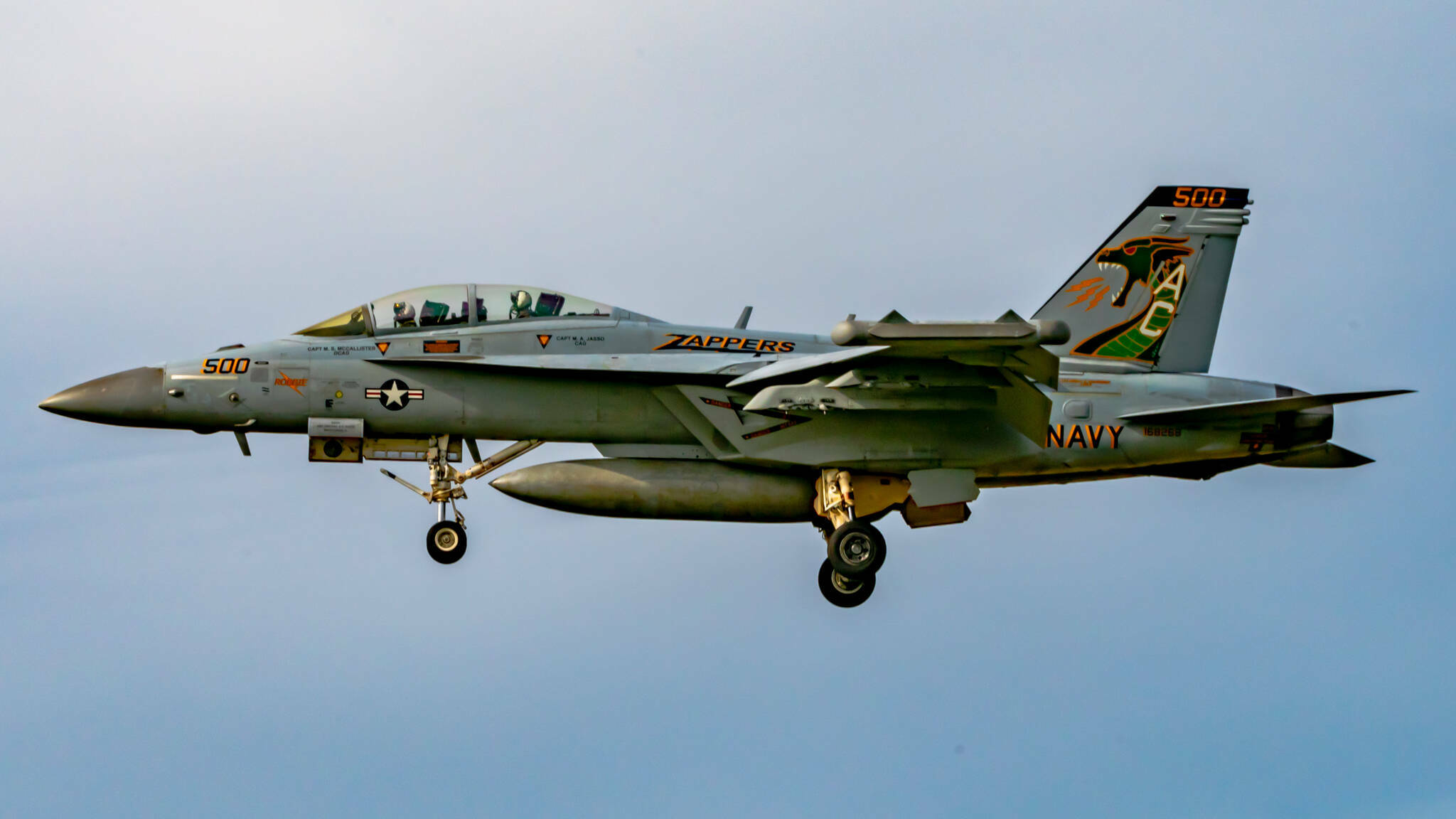The recent EA-18G Growler crash during a routine flight near Mount Rainier last month has reignited interest among experts in software that might make Navy aircraft safer.
Automatic Ground Collision Avoidance System is prevalent in other aircraft and military branches but not the Navy, according to experts.
Billie Flynn, an experimental test pilot with United States Air Force, Navy, Marine Corps and NASA, said that from 2000-2019, the Navy lost 15 aircraft and 13 pilots because it lacked Automatic Ground Collision Avoidance System.
Air Force Col. Dan Javorsek said that “after pleading on deaf ears for decades” the Air Force added the software to the F-16 in 2014, a joint project between NASA, Lockheed Martin and the Air Force Research Laboratory. Since 2014, the collision avoidance system has been credited with saving 11 aircraft and 12 pilots. In 2019, the Air Force transitioned the technology to the F-35.
In 2022, Navy Lt. Richard Bullock died during a routine training mission near Trona, California. Flynn said there has been no push for collision avoidance software since.
“He hit the ground. Nothing was done after that, and now we have two Naval aviators, just two years later, so there’s hardly any excuse for it,” Flynn said.
The cause of the Oct. 15 crash of the EA-18 Growler is under investigation and it’s unknown whether a crash avoidance software could have changed anything. The aircraft from Naval Air Station Whidbey Island crashed during a training flight near Mount Rainier. Flight Officer Lt. Cmdr. Lyndsay “Miley” Evans and Naval Aviator Lt. Serena “Dug” Wileman, both 31 and from California, perished.
Automatic Ground Collision Avoidance System was in development for 20 years and then perfected in a research program between 2009-2011, Flynn said, where it went on to be installed in F-16, F-22 and all three variants of the F-35 for the Air Force.
The software takes care of the airplane, he said. It flies the air crew away from the ground safely and returns control to the pilots.
The technology became available to “everyone and anyone,” Flynn said, because it was controlled by NASA and not a private company. The United State Marine Corps utilized it, and Boeing has tried to implement the software into Navy aircraft but the Navy opted out.
According to Inside Defense, Capt. David Kindley, former F/A-18 and EA-18G program manager, said in 2018 that it would not be difficult to incorporate the software but testing it is cost prohibitive.
The Navy prioritizes weapons and munitions in development, Flynn said. The Navy does risk analysis, and events such as what occurred in October are extremely unlikely.
“Sure enough, it happened twice in this case,” he said. “If you’re a senior Naval officer, you would have decided it was more important to work on the lethality capability for those aircraft instead of a safety system.”
Commander Naval Air Forces Public Affairs did not respond to a request for comment.
In 2016, footage from an Arizona Air National Guard F-16 became declassified. It shows how the collision avoidance system saves an unconscious pilot, ascending the aircraft before it hits the ground. The video quickly went viral.
“Everybody knows about it, and everybody throughout the U.S. Navy hierarchy knows about it,” Flynn said. “They have chosen not to fund it to this point, and Boeing has had a capability to implement in the Super Hornet and Growler and have never been funded by the U.S. Navy, so this is entirely on the shoulders of these two dead aviators, on the shoulders of senior Naval aviators.”
Flynn said there is likely more to come.
“I would expect uproar after this,” he said. “It will force the Navy leadership to agree to put it in. I would hope that every Naval aviator out there is screaming right now at their leadership, demanding to know why it’s not in their airplane.”



